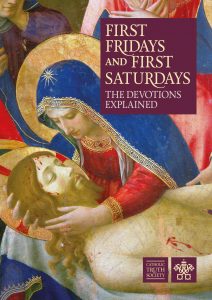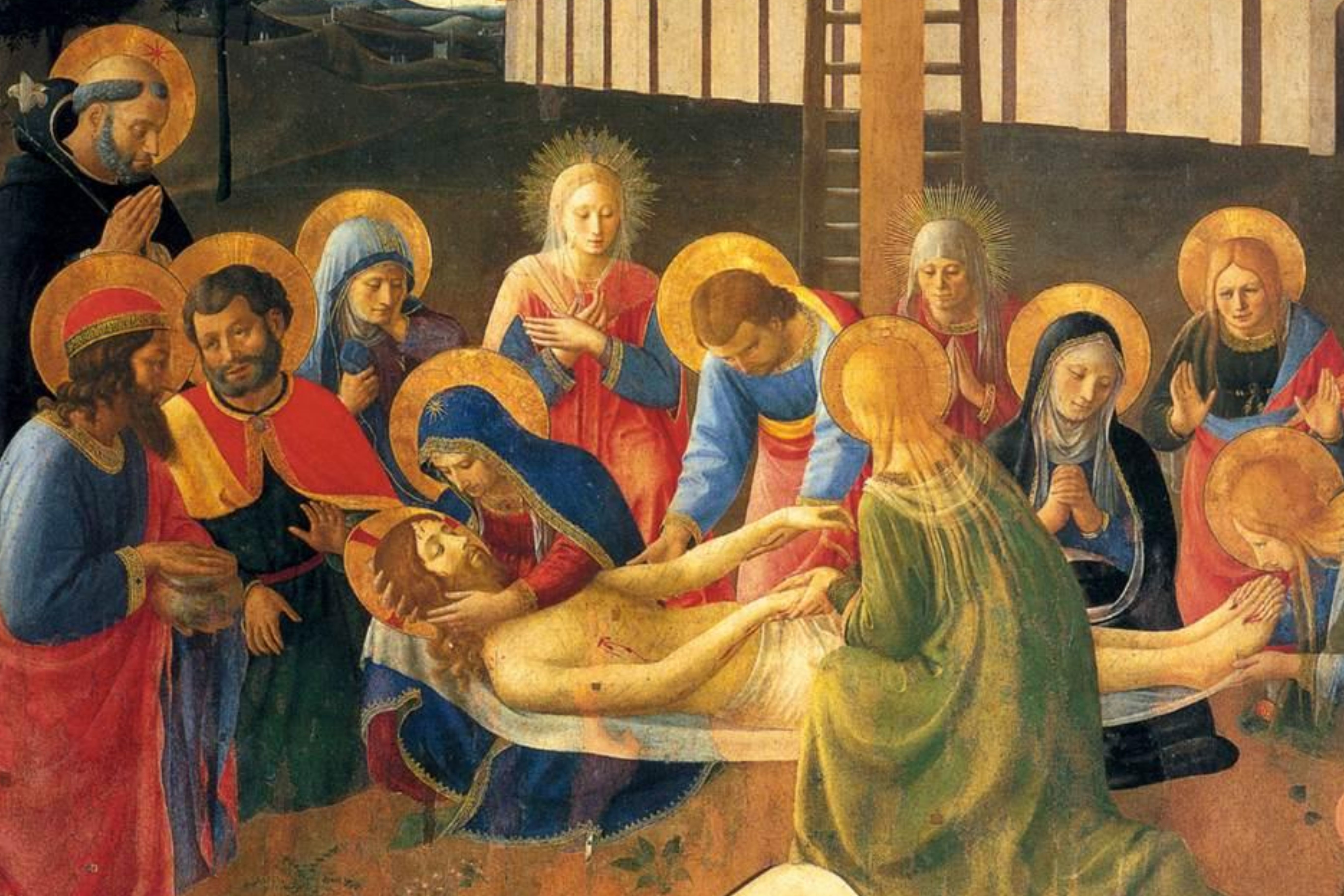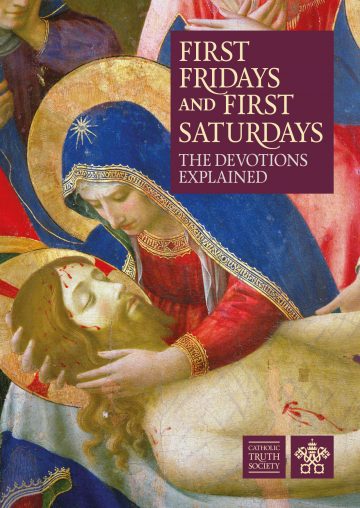‘The Heart of Mary is a sun that spreads its rays and its warmth throughout the world. It is constantly working in every possible way for the salvation of souls.’
(St John Eudes)
Devotion to Our Blessed Lady is as old as the Gospels themselves. She herself declared: ‘All generations shall call me blessed’ (Lk 1:48), and down the centuries this prophecy has been abundantly fulfilled. From the rough sketches we find on the walls of the catacombs, to the beautiful images of Mary in medieval art and literature, through the glories of the baroque pilgrimage churches of Europe and South America, and right down to the mass pilgrimages of today which honour Our Lady at shrines all over the world, the disciples of Jesus have always shown a trusting affection for his Virgin Mother.
Undoubtedly this devotion to Mary is connected to her maternal heart. The tender care she showed for her divine Son, celebrated in the Gospels and in some of the greatest art of the western world, has inspired Christians to believe that they too can have some share in her love and protection.
Moreover, the Gospels make it clear that Mary is not only the Mother of Jesus, but also his most faithful follower. This fidelity is based on her own prayerful reflection (‘Mary treasured all these things and pondered them in her heart.’ Lk 2:19), which keeps her always in Jesus’ presence. She is privileged to witness the homage paid to him by the shepherds and the wise men at his birth (Mt 2:1ff), and later, it is under the care of Mary and Joseph that Jesus grows to maturity (Lk 2:40). She inspires the miracle which opens his public ministry (Jn 2:1ff), and is later present at the Crucifixion, when Jesus gives her to his beloved disciple, and to all his followers, with the words ‘Behold your mother’ (Jn 19:27).
After the Resurrection, she continues faithful in prayer, and together with the Apostles experiences the outpouring of the Holy Spirit at Pentecost (Ac 1:14). Quiet, reflective, a woman who listens more than speaks, but capable of decisive action when the need arises, Mary is truly the model of a Christian life.
The Immaculate Heart
The Church has defined that Mary was entirely sinless, not only in the actions of her life but even from the moment of her conception. This was a special privilege granted her by God in order to prepare her to be the worthy Mother of his Son. This immaculate purity of Mary is precisely that which brings her close to us and fills her with pity for sinners, for whereas sin brings division, goodness and love bring union.
From the Middle Ages onwards, many saints and spiritual writers began to focus on Mary’s heart as the symbol of her closeness to God, and her sympathy for us. Among these great saints were St Anselm (+1109), St Bernard of Clairvaux (+1153) and St Bernadine of Sienna (+1444) who has been dubbed, ‘The Doctor of the Heart of Mary’.
However, it was St John Eudes, who we have seen already as a great Apostle of the Sacred Heart, who also did most to establish devotion to the Immaculate Heart in the Church at large. From the Seventeenth Century onwards the devotion grew and strengthened, and was fostered again by the manifestation of the Miraculous Medal – which bears the symbols of both the Sacred Heart and Immaculate Heart – to St Catherine Labouré in 1830.
Our Lady’s Saturday
Christians have honoured Mary in many different ways, one of which has been by devoting Saturday to Our Lady as her special day. This day was seen as especially appropriate since on the first Holy Saturday, when Jesus lay buried in the tomb, Mary was the only human being who retained her faith in him. The idea of dedicating Saturday to honour Our Lady is at least as old as Alcuin of York (+804), who mention sit in his writings, and continues to the present day – the Roman Missal provides a special Mass of the Blessed Virgin Mary to be used on Saturdays in Ordinary Time when no other feast is celebrated.
Since Saturday was considered Mary’s special day, various observances arose connected to it. Often these devotions included the idea of reparation, since when we consider the perfect love of Mary’s heart, we are filled with sorrow for our own sinfulness. For instance, during the seventeenth century the Dominican Order originated a devotion to Our Blessed Lady known as the ‘Fifteen Saturdays. Those who wish to participate are asked to say five decades of the Rosary on each of the fifteen Saturdays that immediately precede the feast of Our Lady of the Rosary on October 7th, and to receive the Sacraments of Confession and Holy Communion. Among these Saturday devotions we should also mention the ‘Saturday Communion of Reparation to Our Lady’. In 1898, Pope Leo XIII approved this observance, which was propagated by Sister Dolores Inglese (+1928) and the nuns of the Congregation of the Servants of Mary Reparatrix. On the first Saturday of every month, Holy Communion is received and an act of reparation made to compensate for any dishonour shown to Our Lady by the human race. This practice was further encouraged by Pope St Pius X.
However, the most famous and wide-spread of these Saturday devotions is undoubtedly the observance of the First Five Saturdays, which is intimately connected to the cult of the Immaculate Heart, and originates in the revelations made at Fatima in 1917.
Fatima
On 13th May 1917, Our Lady appeared to three shepherd-children, Lucia, Francisco and Jacinta, at the Cova da Iria near the town of Fatima in Portugal. She asked them to return on the thirteenth of every month leading up to October when she would tell them what she wished them to do. In the meantime she asked that the Rosary be recited daily and promised that she would give them a sign that would dispel any doubt they might have.
During their subsequent visits to the Cova, Our Lady entrusted the children with prophetic warnings, asked that Russia be consecrated to her Immaculate Heart, and that a Holy Communion of reparation be made on the first Saturday of each month.
On 13th October, Our Lady identified herself as Our Lady of the Rosary, and fifty thousand people who had gathered at the Cova witnessed the “miracle of the sun dancing in the heavens.” The children in ecstasy were also given visions of the Holy Family, Our Lady of Sorrows, and Our Lady of Mount Carmel. The legitimacy of the apparitions and the veneration of Our Lady of Fatima were approved in 1930.
Between 1936 and 1942, Lucia made known further details of Our Lady’s wishes: her pleas for the recitation of the Rosary, the practice of penance and sorrow for sin, and devotion to her Immaculate Heart. The Soviet Revolution in Russia, the rise of atheistic, totalitarian regimes across Europe and
the outbreak of the Second World War increased interest in the circumstances of Fatima, and prompted the consecration of the world to the Immaculate Heart of Mary by Pope Pius XII in 1942.
More recently, it is well-known that Pope John Paul II had a great devotion to Our Lady of Fatima. On 13th May 1982, exactly a year after the unsuccessful attempt on his life, the Pope made a pilgrimage to Fatima to thank Our Lady for saving his life and, in his person, protecting the whole Church. At the square in front of the Basilica of Our Lady of Fatima, he renewed the consecration of the world to the Immaculate Heart of Mary.
The First Saturday Devotion
During her apparition at Fatima in July 1917, Our Lady said to Lucia,
“I shall come to ask…that on the First Saturday of every month, Communions of reparation be made in atonement for the sins of the world.”
Although she made no further mention of this devotion at Fatima, on 10th December, 1925, our Blessed Mother again appeared to Lucia at Pentevedra, Spain, where the seer had been sent to the Dorothean Sisters to learn to read and write. It was there Our Lady completed her request for the Five First Saturdays and gave her great promise.
Appearing with the Queen of Heaven in that apparition was the Infant Jesus, who said to Lucia:
“Have pity on the Heart of your Most Holy Mother. It is covered with thorns with which ungrateful men pierce it at every moment, and there is no one to remove them with an act of reparation.”
Our Lady then spoke:
“See, my daughter, my Heart encircled by thorns with which ungrateful men pierce it at every moment by their blasphemies and ingratitude. Do you, at least, strive to console me.”
The elements of the devotion
The elements of this devotion, therefore, consist in the following:
2. Holy Communion received on five consecutive First Saturdays;
3. The recitation of the Rosary in addition to meditating on the mysteries for at least 15 minutes.
 This blog is extracted from First Fridays and First Saturdays. This booklet sets out how to pray these two well-known devotions: the Sacred Heart of Jesus and the Immaculate Heart of Mary, and offers helpful guidance as to their value, origins and purpose.
This blog is extracted from First Fridays and First Saturdays. This booklet sets out how to pray these two well-known devotions: the Sacred Heart of Jesus and the Immaculate Heart of Mary, and offers helpful guidance as to their value, origins and purpose.
To learn more about the devotions and the elements that make up these devotions, order your copy of First Fridays and First Saturdays.

